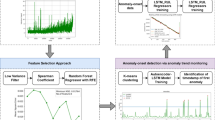Abstract
Deep learning has been applied in mechanical fault diagnosis. Hereinto, the convolutional neural network (CNN) has the shallow convolution operation, supporting the function of feature learning. However, the interpretability of CNN has always been an urgent problem to be solved. Due to the advantages of lifting wavelets and their transforms for impact fault diagnosis, an interpretable network called LW-Net with smart lifting wavelet kernels is proposed for mechanical feature extraction and fault diagnosis. Different from the traditional CNN, the shallow layer of the net is designed to be the lifting layer, concluding split, prediction and update sublayers by the natural convolution operation of lifting wavelet transforms. The smart lifting wavelet kernels are constructed by the mathematic constraints of lifting wavelets, resulting in the nice properties of signal processing. Meanwhile, the kernels with only two parameters are learned from the input data and updated by the back-propagation process. The lifting layer is suitable to accurately extract the impact fault features, improving the effective fault diagnosis of LW-Net. Moreover, the interpretability of LW-Net to achieve shallow feature extraction is verified and discussed by the repeatable simulations. The underlying logic and physical meaning of the lifting layer is revealed to be the adaptive waveform matching and learning based on the inner product matching principle. LW-Net is applied to the engineering diagnostic cases of the Case Western Reserve University dataset and planetary gearbox dataset to verify the effectiveness. The results show the method outperforms the classical and popular methods on the converge speed, classification accuracy and feature extraction.












Similar content being viewed by others
References
Yuan J, Yao Z, Zhao Q et al (2021) Dual-Core denoised synchrosqueezing wavelet transform for gear fault detection. IEEE Trans Instrum Meas 70:3521611
Yuan J, Yao Z, Jiang H et al (2022) Multi-lifting synchrosqueezing transform for nonstationary signal analysis of rotating machinery. Measurement 191:110758
Zhang X, Liu Z, Miao Q et al (2018) Bearing fault diagnosis using a whale optimization algorithm-optimized orthogonal matching pursuit with a combined time-frequency atom dictionary. Mech Syst Signal Process 106:24–39
Qiao B, Liu J, Liu J et al (2019) An enhanced sparse regularization method for impact force identification. Mech Syst Signal Process 126:341–367
Zhu J, Hu T, Jiang B et al (2020) Intelligent bearing fault diagnosis using PCA–DBN framework. Neural Comput Appl 32:10773–10781
Li J, Wang Y, Zi Y et al (2021) Whitening-Net: a generalized network to diagnose the faults among different machines and conditions. IEEE Trans Neural Netw Learn Syst. https://doi.org/10.1109/TNNLS.2021.3071564
Yu J, Zhang C, Wang S (2021) Multichannel one-dimensional convolutional neural network-based feature learning for fault diagnosis of industrial processes. Neural Comput Appl 33:3085–3104
Cao X, Wang Y, Chen B et al (2021) Domain-adaptive intelligence for fault diagnosis based on deep transfer learning from scientific test rigs to industrial applications. Neural Comput Appl 33:4483–4499
Li T, Zhao Z, Sun C et al (2021) WaveletKernelNet: an interpretable deep neural network for industrial intelligent diagnosis. IEEE Trans Syst Man Cy-bern Syst. https://doi.org/10.1109/TSMC.2020.3048950
Wang D, Chen Y, Shen C et al (2022) Fully interpretable neural network for locating resonance frequency bands for machine condition monitoring. Mech Syst Signal Process 168:108673
Pan J, Zi Y, Chen J et al (2017) LiftingNet: a novel deep learning network with layerwise feature learning from noisy mechanical data for fault classification. IEEE Trans Ind Electron 65(6):4973–4982
Chen JL, Li ZP, Pan J et al (2016) Wavelet transform based on inner product in fault diagnosis of rotating machinery: a review. Mech Syst Signal Process 70–71:1–35
Yan R, Gao RX, Chen X (2014) Wavelets for fault diagnosis of rotary machines: a review with applications. Signal Process 96:1–15
Daubechies I, Sweldens W (2000) Factoring wavelet transforms into lifting steps. Wavelets Geosci 90:131–157
Sweldens W (1996) Wavelets and the lifting scheme: a 5 minute tour. Zeitschrift fuer Angewandte Mathematik -und Mechanik, ZAMM 76:41–44
Sweldens W, Schroder P (2000) Building your own wavelets at home. Wavelets Geosci 90:72–130
Zhang W, Peng G, Li C et al (2017) A new deep learning model for fault diagnosis with good anti-noise and domain adaptation ability on raw vibration signals. Sensors 17(2):425
Jawerth B, Sweldens W (1994) An overview of wavelet based multiresulotion analysis. SIAM Rev 36(3):377–412
Claypoole R, Baraniuk R, Nowak R (1998) Adaptive wavelet transforms via lifting. In: 1998 IEEE international conference on acoustics, speech and signal processing (ICASSP 98), vol 3, pp 1513–1516
Duan C (2004) Research on fault diagnosis techniques using second generation wavelet transform. Doctoral thesis, Xi’an Jiaotong University
Chen C, Liu Z, Yang G et al (2021) an Improved fault diagnosis using 1D-convolutional neural network model. Electronics 10(1):59
Zhao Z, Li T, Wu J et al (2020) Deep learning algorithms for rotating machinery intelligent diagnosis: an open source benchmark study. ISA Trans 107:224–255
Bearing Data Center, Case Western Reserve University, Cleve land, OH, USA, 2004. http://csegroups.case.edu/bearingdatacenter/home
Lei Y, Lin J, He Z et al (2012) A method based on multi-sensor data fusion for fault detection of planetary gearboxes. Sensors 12(2):2005–2017
Maaten L, Hinton G (2008) Visualizing data using t-SNE. J Mach Learn Res 9:2579–2605
Acknowledgements
This research is sponsored by the National Natural Science Foundations of China (Nos. 51975377 and 52005335) and Shanghai Sailing Program (No. 21YF1430600). The work is also partly supported by the Key Laboratory of Vibration and Control of Aero-Propulsion System Ministry of Education, Northeastern University (VCAME201907). Special thanks are due to Key Laboratory of Education Ministry for Modern Design and Rotor-Bearing System of Xi’an Jiaotong University for sharing the planetary gearbox dataset in Case 2.
Author information
Authors and Affiliations
Corresponding author
Ethics declarations
Conflict of interests
The authors declare no conflict of interest.
Additional information
Publisher's Note
Springer Nature remains neutral with regard to jurisdictional claims in published maps and institutional affiliations.
Rights and permissions
About this article
Cite this article
Yuan, J., Cao, S., Ren, G. et al. LW-Net: an interpretable network with smart lifting wavelet kernel for mechanical feature extraction and fault diagnosis. Neural Comput & Applic 34, 15661–15672 (2022). https://doi.org/10.1007/s00521-022-07225-1
Received:
Accepted:
Published:
Issue Date:
DOI: https://doi.org/10.1007/s00521-022-07225-1




